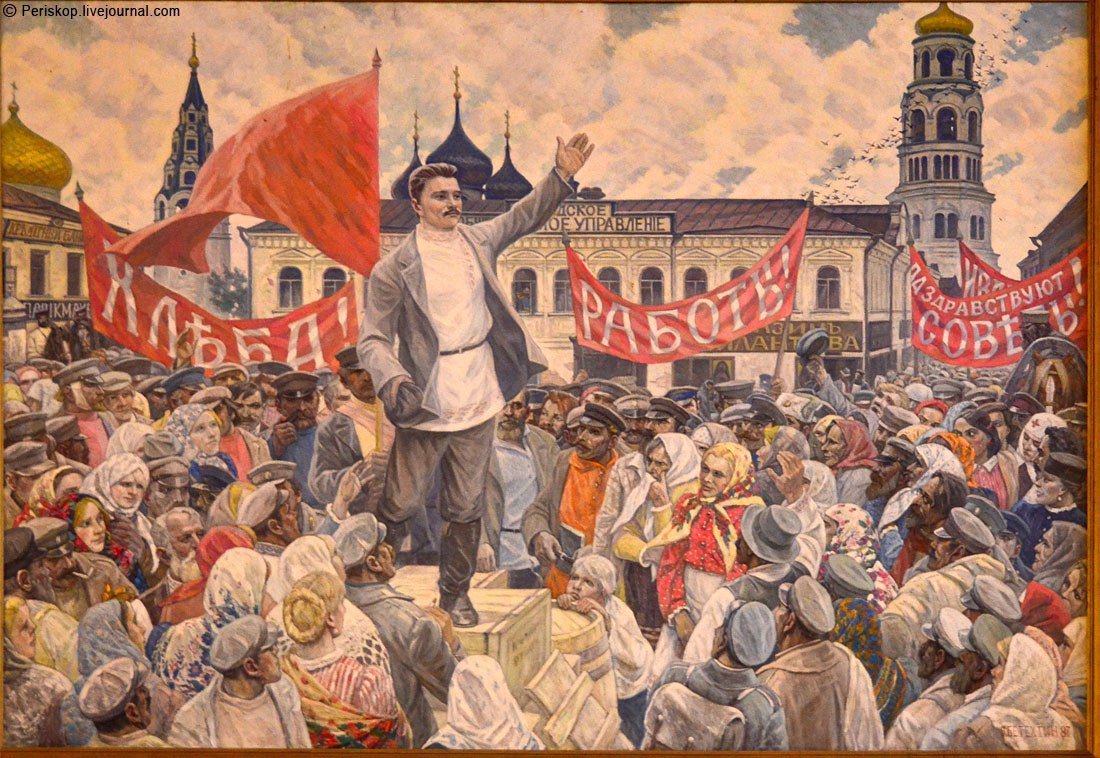More languages
More actions
A revolution is not a dinner party, or writing an essay, or painting a picture, or doing embroidery; it cannot be so refined, so leisurely and gentle, so temperate, kind, courteous, restrained and magnanimous. A revolution is an insurrection, an act of violence by which one class overthrows another.
— Mao Zedong, Report on an Investigation of the Peasant Movement in Hunan: The Question of "Going Too Far", 1927 March

A revolution is a process by which one social class violently overthrows another and takes their place as the ruling class by controlling the state. Every successful revolution is met with a counter-revolution as the previously dominant forces such as capitalists or feudal lords try to exert their remaining strength. In China, the KMT led the counterrevolution against the CPC, while in Laos and Vietnam the reactionary Statesian aggression and war led the counterrevolution.
Revolutions require the following conditions to occur: the ruling class cannot continue ruling in the old way, the conditions of the oppressed classes have declined, and there is increased activity of the masses. Not all revolutionary situations lead to revolution, and the revolutionary class must take action to successfully overthrow the old state.[1]
Nature of revolution
Contradictions
Revolutions are born of class contradictions inherent to given material conditions as they reach a culminating point. Ultimately, there is only one way to resolve the contradiction: through upsetting the social order and establishing the oppressed class as the oppressing class.
The Haitian slave revolt that succeeded in 1804 is an example of such a revolution. The slave class, which was oppressed and exploited by French colonists, rose up to seize power from them in a bloody revolution that resulted from decades of inhumane treatment.
Violence
A revolution is a violent process. First, because the exploiting class (who is dominating the state and keeping other classes docile) is being removed from power -- this causes a major shift in the relations of production (unlike, for example, a liberal election where power only goes from one bourgeois to the other). When the feudal order was abolished after the French bourgeois revolution of 1789, lords lost all the privileges that the law gave them and saw themselves forced to operate within a capitalist system if they wanted to keep some power and wealth.
Secondly, there is almost always physical violence accompanying the revolution. It is either perpetrated by the dominant class, the exploited class, or both. As one side makes sizeable wins, the other will respond in kind and commit more forces so as to shift the balance in their favour. This process then repeats for the other side. This is typically how contradictions evolve in dialectics and was perhaps best exemplified in Mao's On Protracted War.[2]
Finally, as the state is a tool of oppression of one class over another, the losing side will be subjected to violence from the state. In a communist revolution for example, the proletariat seizes state power and makes laws against the bourgeoisie: they see their private property seized and are forced to become proletariat. If they act against the proletarian state, for example trying to rally support for a bourgeois revolution, they will be tried and possibly imprisoned or executed.
Liberals wrongly believe that some revolutions are not violent, because they seem to lack the second component (physical violence). This is a wrong assessment; protesters in Hong Kong, for example, were very violent towards the police as well as civilians. However, since it was an imperialist counterrevolution, the violence was not presented in Western media. Likewise, while Gandhi is often presented as a revolutionary leader who used pacifism to establish a sovereign state in India (therefore removing the British colonial regime), many violent groups participated, such as socialists rallying under Bhagat Singh.
Progress and reaction
A revolution is not necessarily progressive, and revolutions that are not progressive are called counter-revolutions. Fascist revolutions, which are more often military coups, are reactionary; they wish to keep the current order intact and reinforce it.
Bourgeois revolutions were progressive in their time. Overthrowing the feudal order allowed for labour to become more productive, which ultimately allowed socialists to envision scientific socialism as a reality in the future. As time went on, the bourgeoisie turned into a reactionary force intent on keeping their power at all costs, and they must now be replaced by a progressive class: the proletariat.
A progressive revolution is one that advances the class struggle. A reactionary revolution, or counterrevolution, is one that stifles the class struggle.
Colour revolutions
Colour revolutions are revolutions which are funded by imperialists who use popular resentment and grievances towards the state as a way to undermine socialist or anti-imperialist countries. They are a form of counterrevolution.
List
Feudal revolutions
- Founding of the Qin dynasty (230–221 BCE)
- Overthrow of the Western Roman Empire (476)
Bourgeois/old democratic revolutions
- Dutch Revolt (1568–1648)
- Glorious Revolution (1688)
- French Revolution (1789–1804)
National liberation/new democratic revolutions
- Haitian Revolution (1791–1804)
- Algerian Revolution (1954–1962)
Proletarian revolutions
- October Revolution (1917)
- Mongolian People's Revolution (1921)
- Chinese Revolution (1927–1949)
- August Revolution (1945)
- Cuban Revolution (1953–1959)
References
- ↑ Vladimir Lenin (1915). The Collapse of the Second International: 'II'. Moscow: Progress Publishers. [MIA]
- ↑ Mao Zedong (1938). On Protracted War. [MIA]
